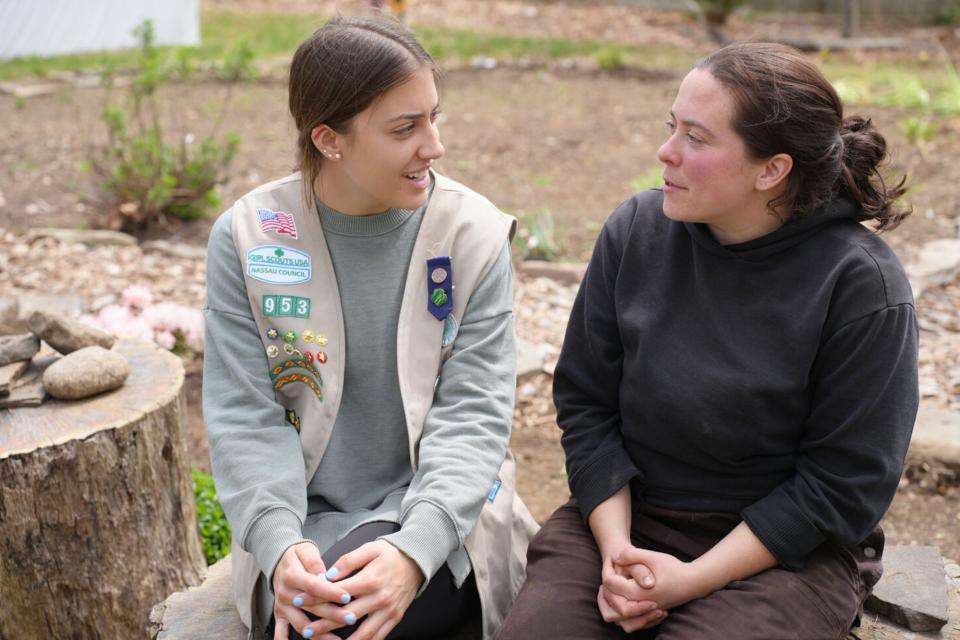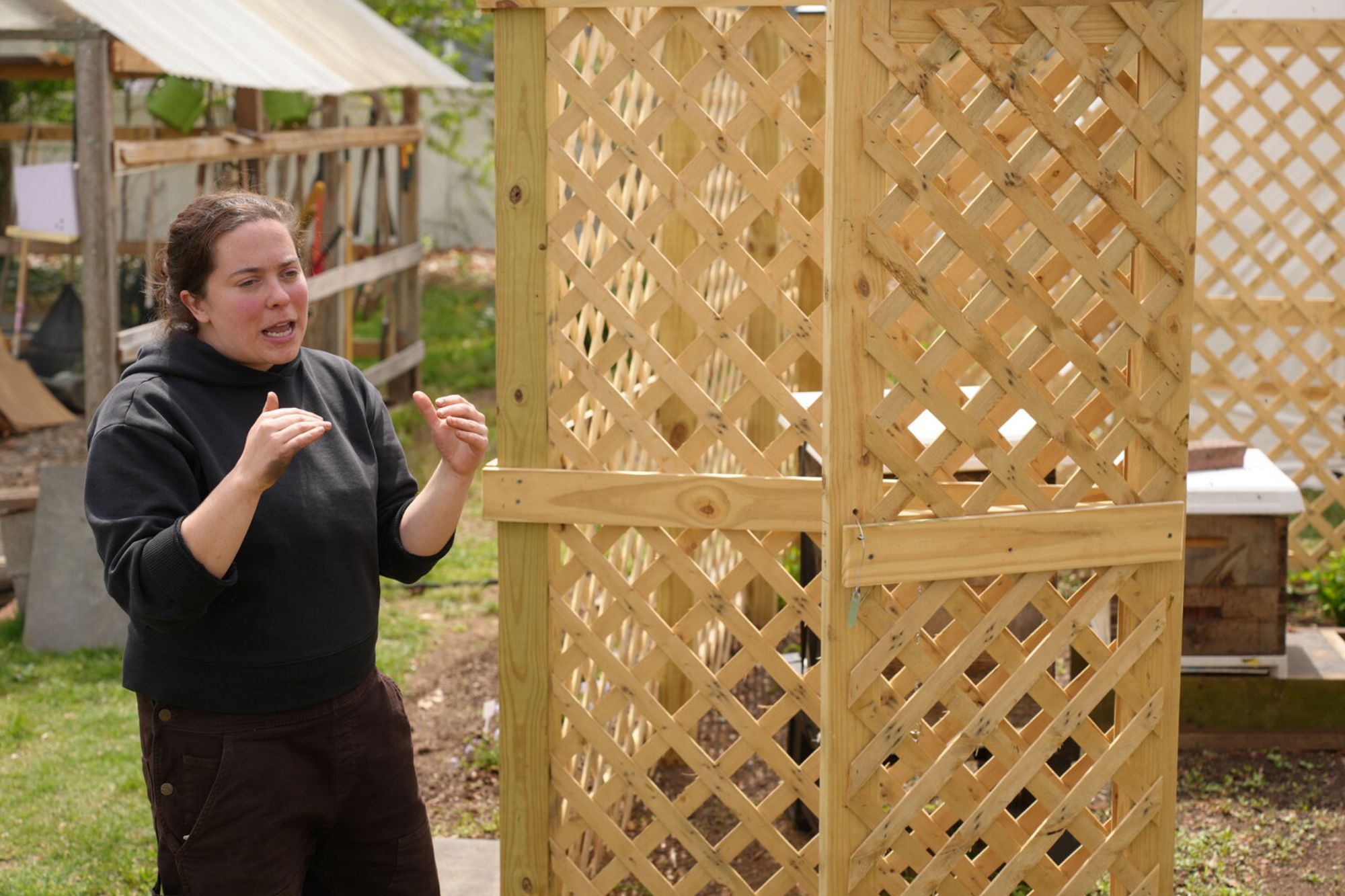
This article was written by Jordan Vallone and published by the LI Herald.
Over the past few years, the Garden at St. Francis has become a sanctuary for volunteers young and old, and reinvented itself as a working farm that provides fresh food to the community and dozens of pantries in need. And according to garden manager Kristin Talbot, native and non-native pollinators — bees, butterflies and moths —help it thrive.
Last Saturday, garden volunteers celebrated Earth Day and kicked off the growing season with open gardening hours and several other activities throughout the day. And the season ahead might look a little different than those in the past, because Talbot has been working with a Bellmore Girl Scout, Julia Amon, whose Gold Award project at St. Francis will help the dozens of pollinators that make the garden their home have an abundance of food.

Garden manager Kristin Talbot led an informative presentation about the garden’s honeybee hive, which was made possible by a grant from the Episcopal Ministries of Long Island.
When people think of pollinators, the first thing that comes to mind is most likely bees, Talbot said — more specifically, honeybees. And though honeybees thrive in the United States, they are not native, and actually came from Europe during times of early settlement. A honeybee population is key to a successful garden, and at St. Francis there are new, bustling hives that were made possible by a grant from the Episcopal Ministries of Long Island, which oversees the operations of the church and garden.
Keeping bees alive all year long is a tricky proposition, Talbot said. “It’s quite hard to keep bee populations,” she explained. “It’s a constant game of, what did we do wrong? Are they getting too much water in their hives? Is there fungus growth? What can we try to fix?”
The new population of bees at the garden is kept safe in its hives by 6-foot-tall lattice fences — meant to protect the bees, and the people working in the garden, by encouraging bees leaving the hives to fly up and over it, above volunteers’ heads.
What helps bees, and dozens of other pollinators like butterflies and moths, is a garden that provides them with a steady source of food.
Amon, 17, is a junior at Mepham High School and a member of Girl Scout Troop 953 in Bellmore. She connected with Talbot last spring to do her Gold Award project at the garden. What the duo came up with was simple: a pollinator patch that attracts insects, honeybees and ground bees, in order to keep the garden and all its vegetables alive and thriving throughout the summer.
“I mostly just wanted to help out the community and help grow the food here,” Amon told the Herald at the garden on Earth Day.
“The pollinator patch helps the bees do what they were meant to do — and that helps the whole neighborhood.”
The pollinator patch was created directly behind the church’s meeting hall. Talbot said it was an old garden patch that she and volunteers were unable to make viable for gardening again. Now it serves as both an herb and pollinator garden, and as a backdrop to the church’s outdoor altar.
Around the pollinator patch, Amon said, are flowers such as roses, mums, lavender and dianthus, as well as other species of plants, like a butterfly bush and a blueberry bush. Amon worked with Talbot last fall to get some of these plants into the ground, so they would grow and flower around Earth Day. Some additional plants were also added this spring.
“The way I like to describe it,” Talbot said of the patch, “is we aren’t purists here. There’s a lot of plants that are native, but there’s a lot of plants in here that aren’t, and (that are) really great feeders. Our main focus is to make sure that our bees have food.”
In order to successfully complete her Gold Award, Amon needs to document 80 hours of work — a requirement she has met and surpassed — and show a “global aspect” of the project, which means teaching classes about her work to people not involved with the garden. Over the summer, she said, she’s hoping to do that with summer camps to officially complete her work. And she plans to remain involved with the garden, having learned a lot under Talbot’s mentorship.
In late June, Talbot said, the garden and church will celebrate Pollinator Week, a national movement and celebration in support of pollinator health. On Sunday, June 25, St. Francis will debut its first farm stand, which will be open to the public.
The garden’s Earth Day festivities were successful, Talbot said, because they lured people into the garden, which for many was a learning experience. “The theme of today was we’re educating while we’re working,” she added. “Because that’s what we want to do — invite people to come work with us because that’s how you learn to love the earth.”
The Garden at St. Francis is at 1692 Bellmore Road in North Bellmore. For more, visit StFrancisBellmore.org.